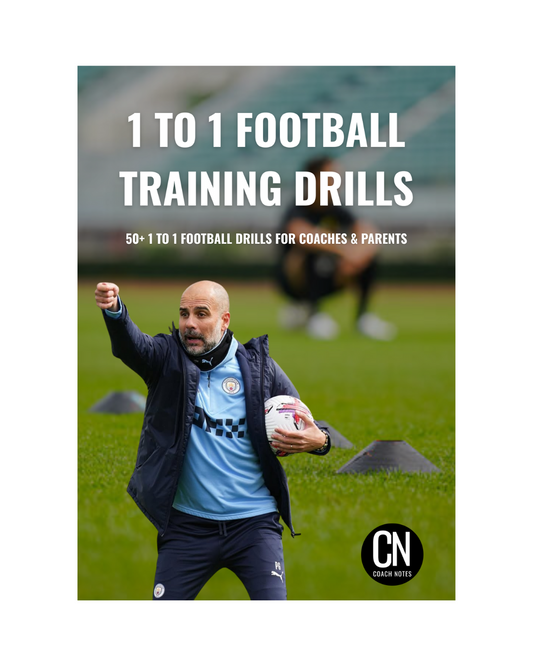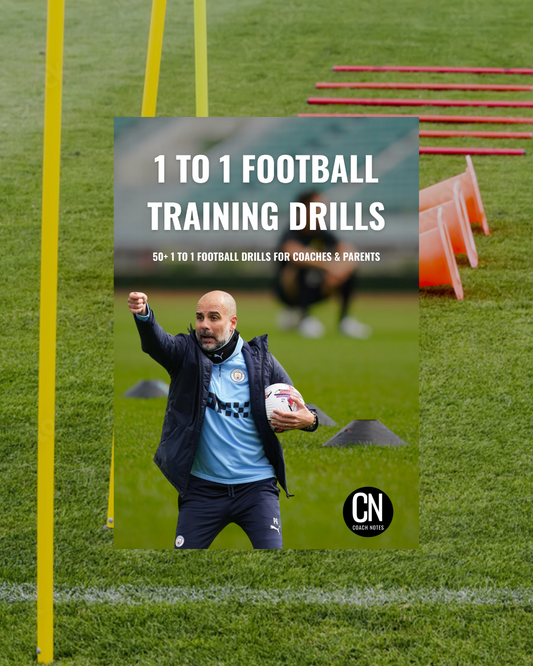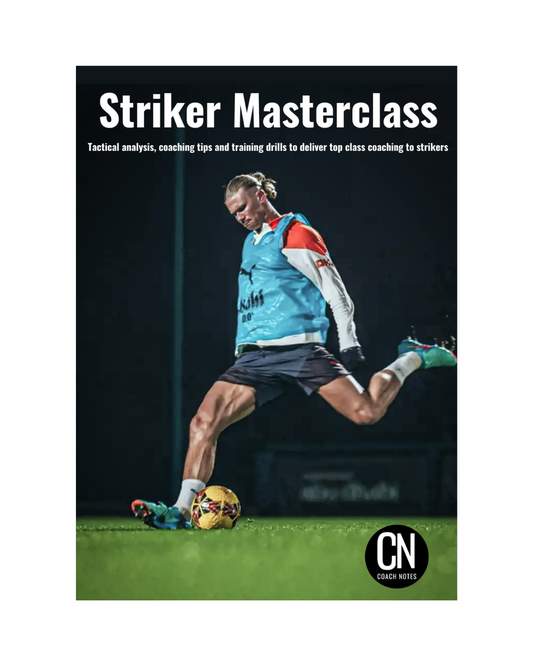
Coaching a Tiki-Taka Philosophy
Share
Mastering Tiki-Taka - Coaching the Art of Possession Football
Tiki-Taka football is one of the most iconic and successful playing styles in the modern game, defined by quick passing, positional fluidity, and relentless ball control. Originating from Johan Cruyff’s Total Football principles and perfected by Pep Guardiola’s Barcelona and Spain’s golden generation, Tiki-Taka is synonymous with dominance, patience, and intricate movement.
But how can coaches effectively train their teams to play this way? Below, we break down the key principles of Tiki-Taka football and the coaching methodologies needed to develop this philosophy.
What is Tiki-Taka?
Tiki-Taka is a possession-based system that prioritizes:
- Short, quick passes to control the game and tire out opponents
- Constant movement and positional rotations to create overloads
- One-touch football to minimise defensive pressure
- High pressing upon loss of possession to immediately regain control
This philosophy was famously executed by:
- Barcelona (2008–2012): Guardiola’s legendary side featuring Xavi, Iniesta, and Busquets used positional play to dominate European football
- Spain National Team (2008–2012): Won Euro 2008, the 2010 World Cup, and Euro 2012, controlling games with unmatched possession and patience
- Manchester City (2017–Present): Guardiola has evolved Tiki-Taka, maintaining its core values while adding verticality and direct play
While Tiki-Taka has evolved, its foundations remain crucial to any coach wanting to implement a technical, fluid, and intelligent playing style.
Key Coaching Principles for Tiki-Taka
To teach Tiki-Taka, coaches must train players to think quickly, move constantly, and value possession above all else. Here are the essential methodologies for developing a Tiki-Taka system:
1. Rondos: The Foundation of Tiki-Taka
Rondos are small-sided positional possession games where outnumbered defenders try to win the ball.
Why it’s essential:
- Develops first touch, quick passing, and composure under pressure
- Improves decision-making by forcing players to assess space instantly
- Enhances positional awareness, teaching players to always be an option
How to use it:
- Basic Rondos (4v2, 5v2): Train short passing and ball circulation
- Positional Rondos (6v3, 8v4): Replicate real game structures, helping midfielders learn to pivot play effectively
Example: Barcelona’s midfield spent hours daily in Rondos, sharpening their technical ability and passing speed.
2. Positional Play (Juego de Posición): Controlling Space & Movement
Positional Play is the tactical foundation of Tiki-Taka. Players are taught where to be at all times to maintain possession, create angles, and break defensive structures.
Key principles:
- Always offer at least two passing options to the ball carrier
- Play in specific zones to ensure maximum space occupation
- Constantly form triangles and diamonds to facilitate passing sequences
How to implement it:
- Small-sided games focusing on structured build-up and passing angles
- 11v11 drills with strict positional requirements to reinforce movement patterns
Example: Spain’s national team positioned midfielders between opposition lines, ensuring constant passing lanes and numerical advantages.
3. One-Touch Passing & Small-Sided Games
Players must develop quick-thinking and rapid ball circulation.
Benefits include:
- Fast decision-making – players must think two steps ahead
- Tight space control – encourages composure and quick passing under pressure
- Understanding of tempo – knowing when to slow down or accelerate the game
Example: Xavi and Iniesta perfected one-touch passing drills to constantly shift opposition defences.
4. Pressing & Defensive Transitions: Regaining Possession Instantly
Tiki-Taka is not just about passing—it’s also about winning the ball back immediately.
Core principles of pressing:
- 5-second rule: Press aggressively for five seconds after losing possession
- High pressing triggers: Initiate pressing when the ball moves backward or sideways
- Positional pressing: Defenders press in compact units, not individually
Example: Guardiola’s teams rely on high-intensity pressing to suffocate opponents and force turnovers close to goal.
5. Fluidity & Positional Rotations
To keep possession unpredictable, players must rotate positions seamlessly.
Why it’s effective:
- Creates overloads in key areas
- Ensures constant passing options and prevents stagnation
- Forces defenders to make difficult tracking decisions
How to train it:
- Drills that encourage automatic rotations between midfielders and wingers
- Situational training where players switch zones mid-play
Example: Manchester City’s positional fluidity ensures players are never static, allowing constant movement between lines.
Final Thoughts: Implementing Tiki-Taka at Any Level
Tiki-Taka is not about simply passing for the sake of possession—it’s about intelligent positioning, precise passing, and controlling the tempo of the game. To develop this philosophy, focus on:
- Rondos – The heartbeat of quick passing and awareness
- Positional Play – Teaching players how to use space effectively
- One-Touch Passing – Developing fast decision-making under pressure
- High Pressing – Ensuring instant ball recovery to sustain attacks
- Fluid Rotations – Keeping movements unpredictable and dynamic
By integrating these coaching principles, your team will learn to control games, dictate tempo, and dominate possession like the best Tiki-Taka teams in history.










3 comments
interested
I like it
Thanks for all your content. I have gained valuable coaching knowledge.
Is there any where to find a sample 1 week or even 4 week training plan of implementing these for a team